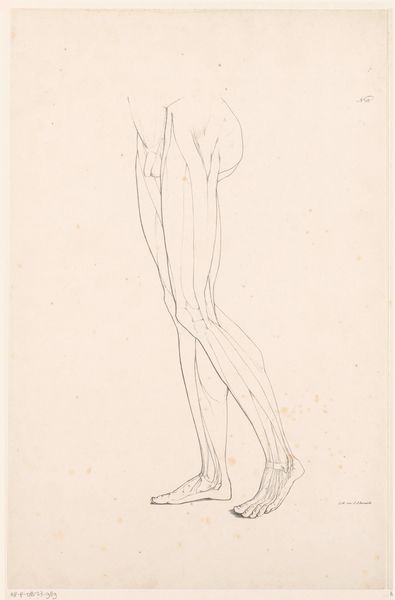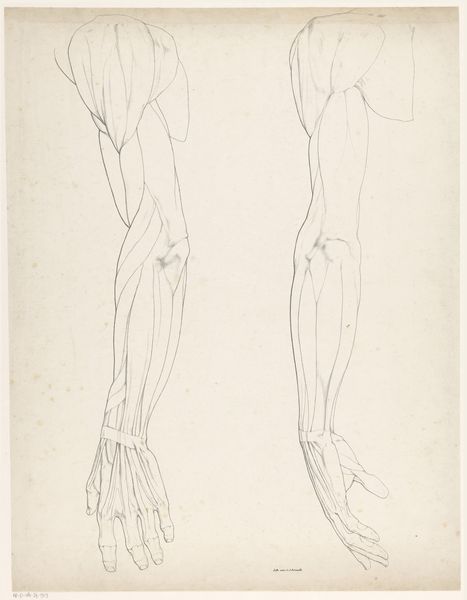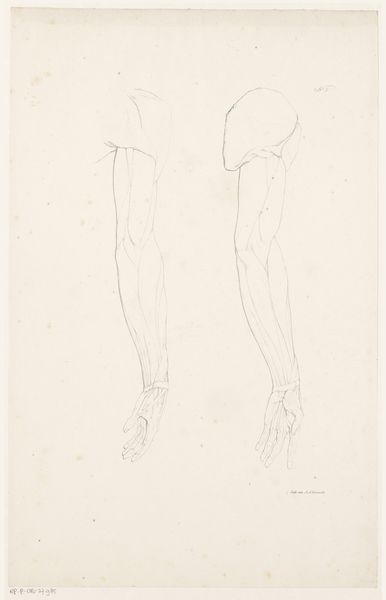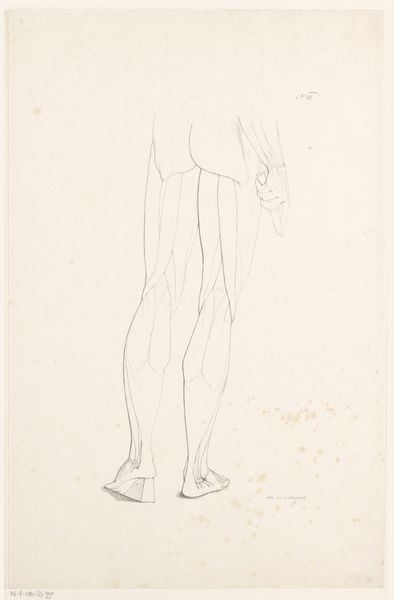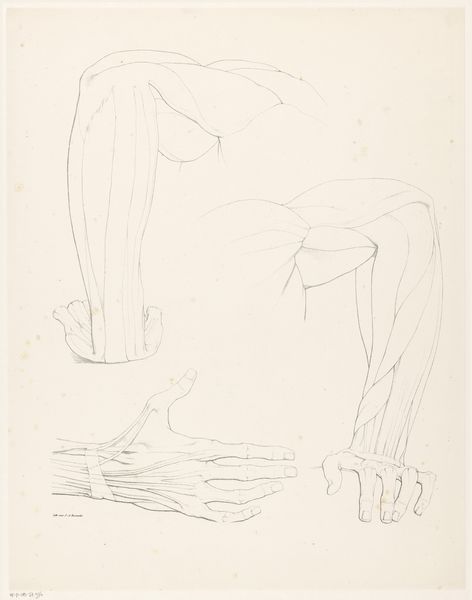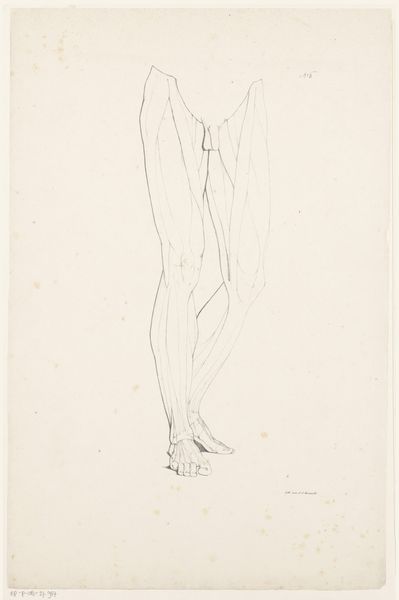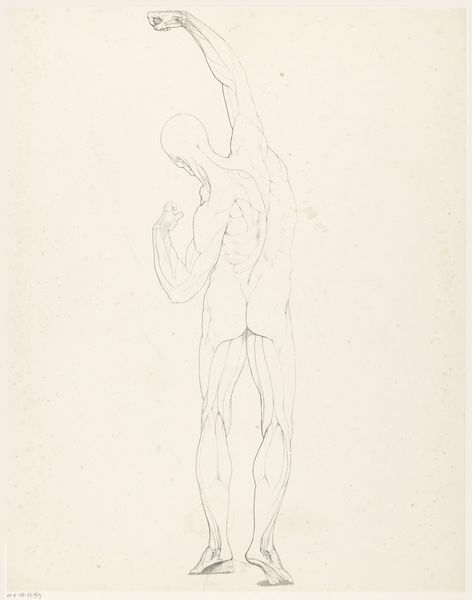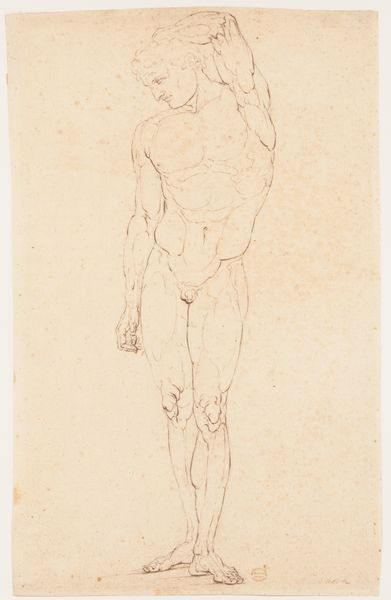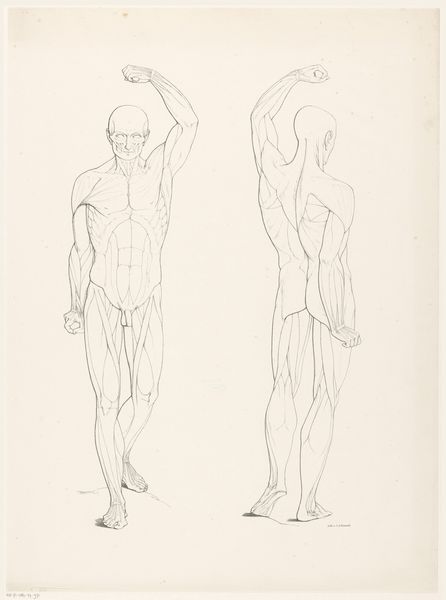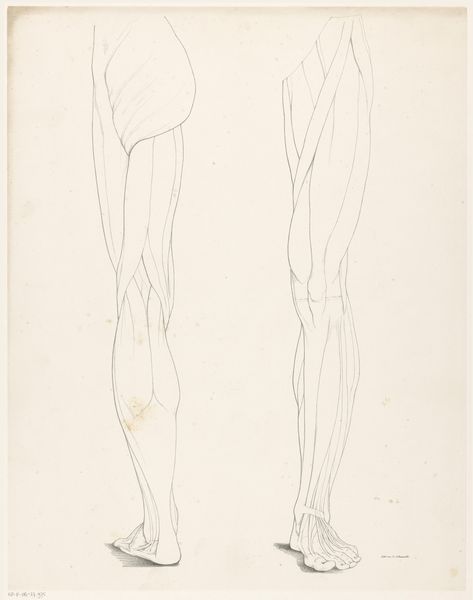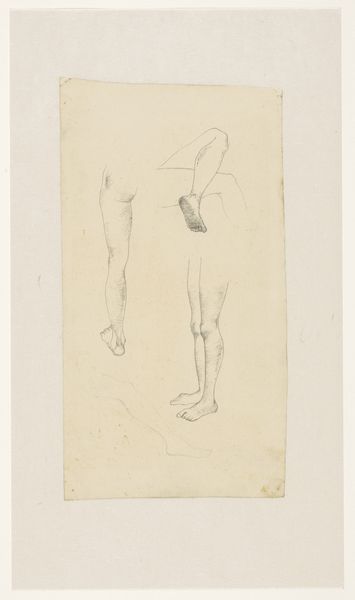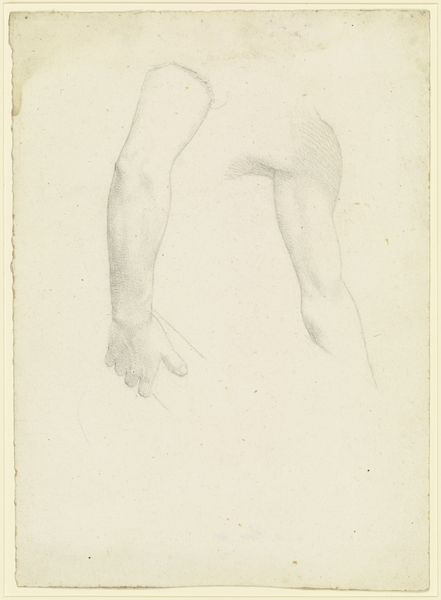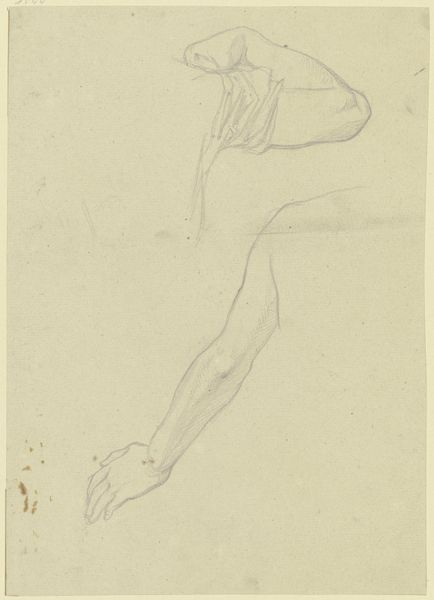
drawing, pencil
#
portrait
#
drawing
#
etching
#
figuration
#
pencil
#
line
#
sketchbook drawing
#
pencil work
#
academic-art
#
arm
Dimensions: height 430 mm, width 284 mm
Copyright: Rijks Museum: Open Domain
Curator: Before us is a pencil drawing titled "Twee armen met spierbundels," or "Two Arms with Muscle Bundles," created by Jean Augustin Daiwaille sometime between 1820 and 1833. It's part of the Rijksmuseum's collection. What strikes you about it? Editor: The sheer anatomical precision, of course. Look at the detailed rendering of the muscles and tendons! It evokes a strong sense of scientific observation merged with artistic skill. The almost ethereal quality of the pencil work also makes it visually arresting. Curator: Daiwaille's training would have been rooted in the academic tradition. Such studies were vital for artists who wanted to depict the human form accurately in history paintings or portraits, which were key to accessing particular social strata and, thereby, commissions. Editor: Indeed, the medium itself is crucial. The deliberate, meticulous strokes create form and shadow. It's almost sculptural, yet entirely achieved through lines on paper. The restrained use of tone draws my eye along the arm from the deltoid to the fine articulation of the hand, ending there, like a caress. Curator: Exactly, but let's also consider the labor. These drawings are preparatory works, steps in a process. An artist painstakingly studying musculature provides insights into workshop practices and the production of grander artworks – the engine room that ultimately fuelled art creation. Editor: True, yet the drawing also holds its own as an object of aesthetic value. Its linear elegance, its starkness. These lines form structures. What is most astonishing is how those same structures represent actual human movement, like a coded choreography. Curator: I'd also add that these sorts of drawings, whilst depicting a purely "natural" phenomenon of anatomy, do also represent certain ideals, the kind of virile male body deemed important during that era. We could discuss power and representation within systems of display. Editor: Perhaps. Still, let's admire its formal merits: the delicate pressure of the pencil, a light yet robust composition, all these elevate a functional study into something movingly visceral, beyond anatomical textbook accuracy. Curator: Thinking about its purpose allows me to consider how drawing instruction functioned. Editor: As a final thought, what remains vivid is this drawing's formal eloquence, regardless of the subject matter's history or intent. Thank you.
Comments
No comments
Be the first to comment and join the conversation on the ultimate creative platform.
